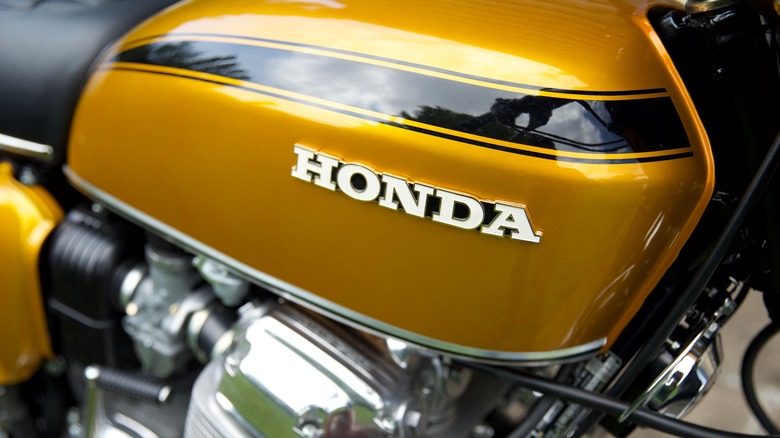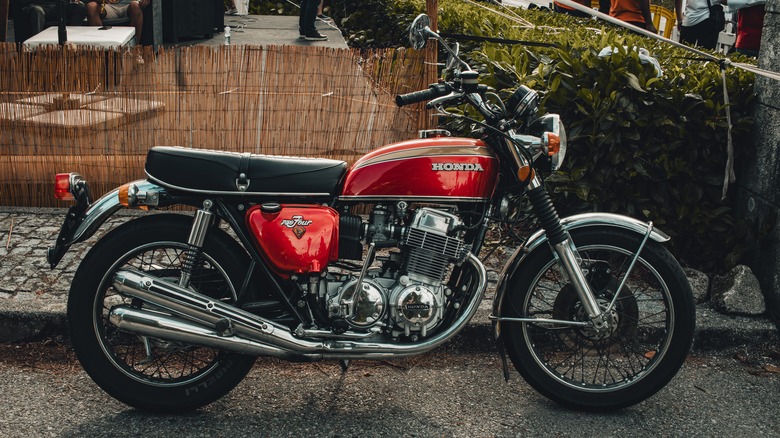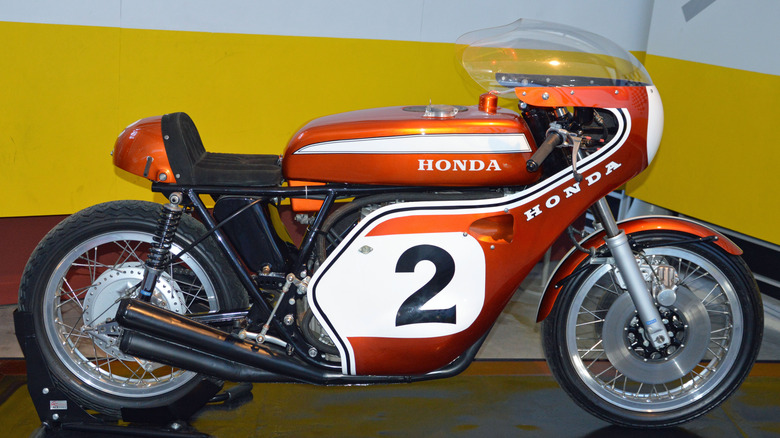Differences Between Honda CB750 & CR750 Motorcycles
The naming conventions for motorcycles can be a little tricky to understand. Each company seems to have its own code for the type, engine size, and feature set of each bike in its lineup. To make matters worse, these naming conventions tend to change between generations. This makes it that much harder to know the difference between certain motorcycle models that, for one reason or another, have as little as a single letter distinguishing them from their peers — especially when that manufacturer has decades of different models to sort through.
Honda has been the best-selling motorcycle company in the world for over 50 years. The company has made dozens of different bikes over that period and, while many of them enjoyed global consumption and are now considered classics — some of which are surprisingly cheap even today — there have been a few rare models where only a handful of them were ever made.
The Honda CB750 and CR750 are perfect examples of this. Two bikes that came out only a few months apart, and which share an almost identical 750cc engine, but have two different ever-so-slightly designations. So what is the difference between these two bikes, and what are each of their stories?
The 'super bike' that was the Honda CB750
The Honda CB750 was a midweight street bike that was first launched in 1969. The earliest iteration of the model was called the CB 750 Four, AKA the "Sandcast" after the now outdated method of using sand to create molds for crankcases. This was one of Honda's first attempts to compete with American motorcycle companies that had found a demand for bikes with larger and more powerful engines.
It had a 736cc, four-stroke, transverse four-cylinder, SOHC engine with two valves per cylinder. It had a 61 mm bore and 63 mm stroke, a 5-speed transmission, and offered up to 67 horsepower and 44 pound-feet of torque. According to Silodrome, "some have called it the first modern motorcycle, and the word 'super bike' was coined specifically to refer to it." These are just some of the reasons why this bike is frequently counted among the best Honda motorcycles ever made, and it's why they are still so highly sought after by those looking for a classic Honda to rebuild.
There have been several new generations of the CB750 since the Sandcast, as the designation has become a staple in the company's lineup. In fact, Honda continues to use the CB750 name in the newer "Hornet" models. These are naked street bikes which are higher-seated, and more aggressively designed than their ancestors. The Hornet has all of the style and engineering improvements of a modern motorcycle, but it's designed to be ridden on the same streets that the Sandcasts were. It's a clear testament to the purveying popularity of powerful, middleweight street bikes that can dominate whatever road they find themselves on.
The Honda CR750 was the rare racing-variant of the bike
While the CB750 was an incredibly popular commercial motorcycle, it wouldn't be all that surprising if you had never heard of the CR750. This was a rare racing bike that was developed to compete against the predominantly American and European motorcycles in the 1970 Daytona Beach 200. According to Silodrome, "The Honda R&D department developed an engine capable of upwards of 96 hp using the stock CB750 engine as a starting point. Over 200 new parts were developed including new magnesium crankcases, a new cam and cam chain tensioner, new pistons, connecting rods, a new crankshaft, and a whole lot more."
Honda might have started with the CB750 engine, but several modifications were made in order to give it that extra power. The CR750 was made quickly, however, and the engineers weren't given adequate time to test it. There were some long-term problems that were discovered before the race, such as the hard rubber chain tensioner disintegrating from exposure to heat inside the engine, and needing to be replaced.
Even so, Dick Mann won the '70 Daytona 200 on the CR750, and then the bike was immediately retired from the public racing circuit. That isn't the end of its story though. MCS wrote that "The 1970 Honda 750 Daytona was also the basis for a production model that was developed for private racers." It seems that there weren't many of these, but it wouldn't come as a surprise if they were a hot commodity among collectors, given the model's rarity and history.


